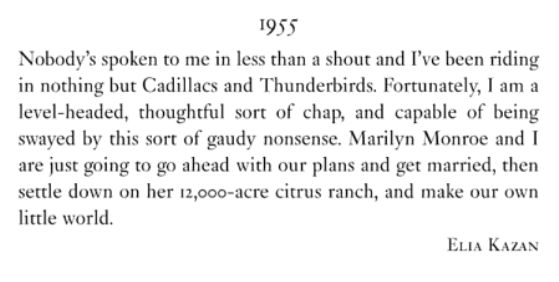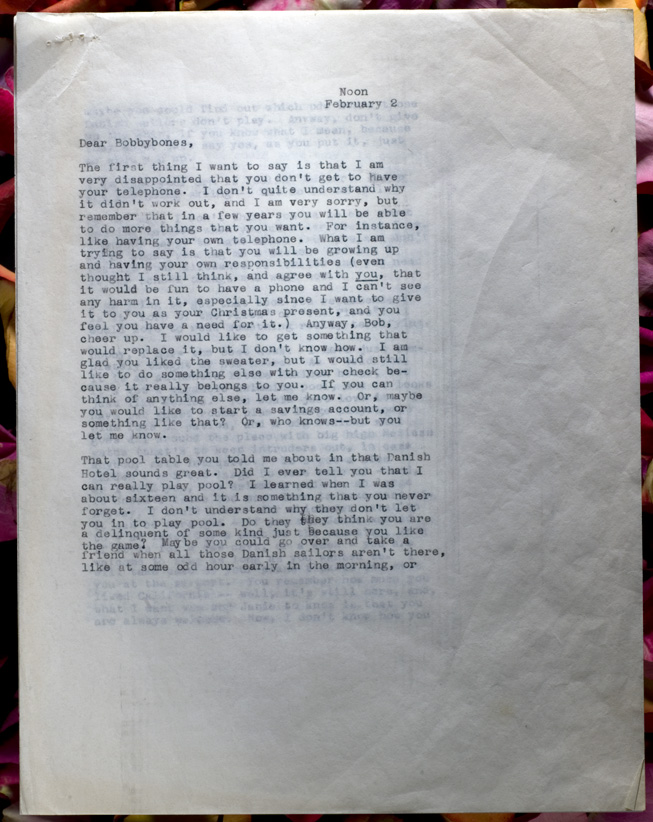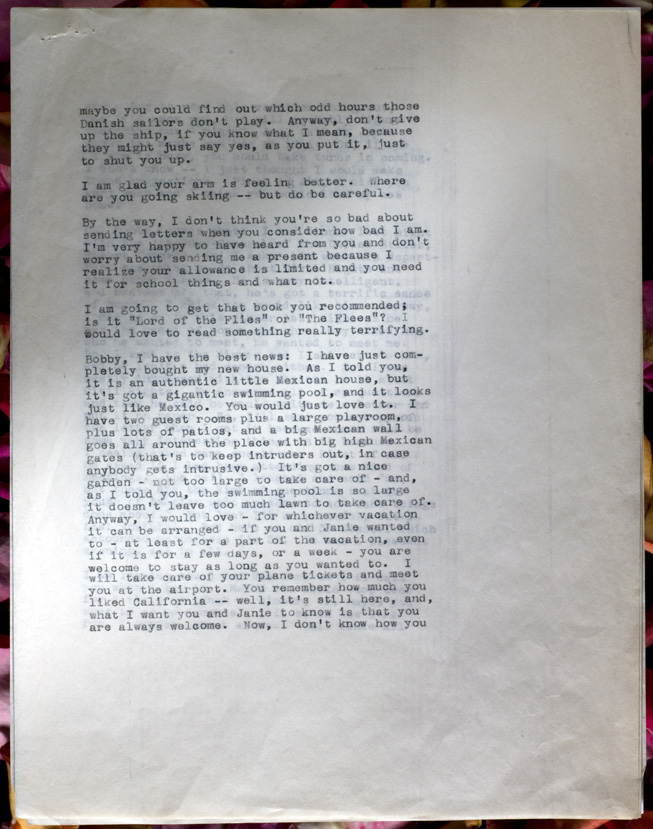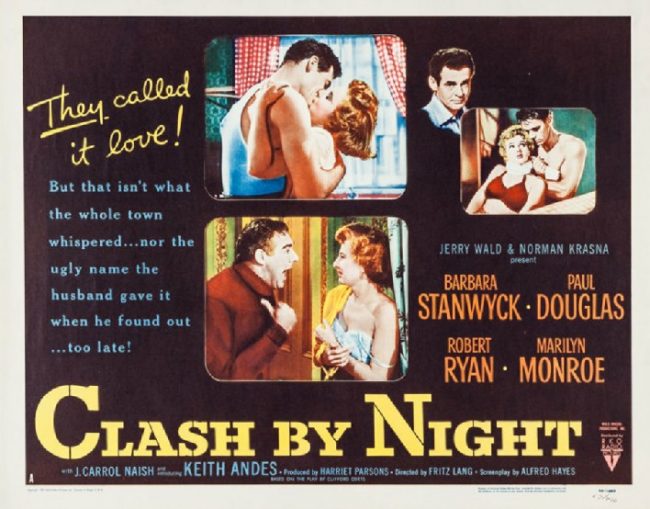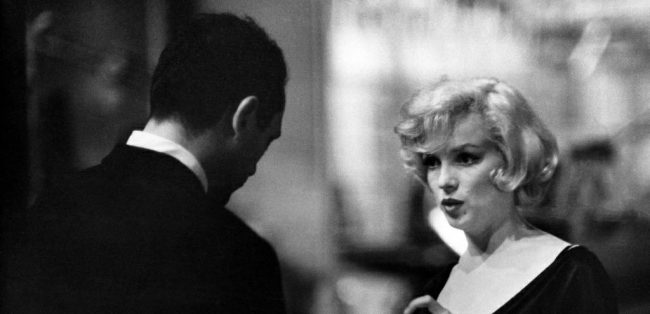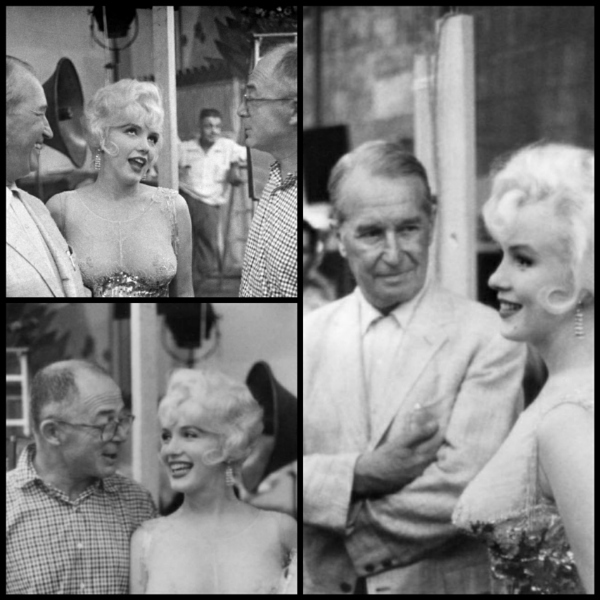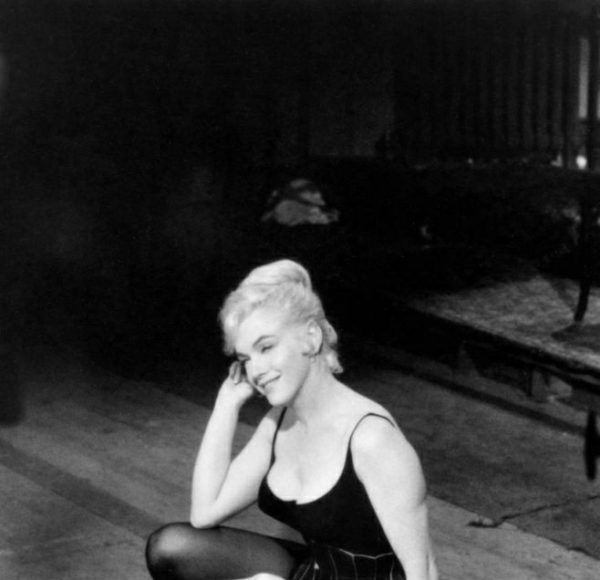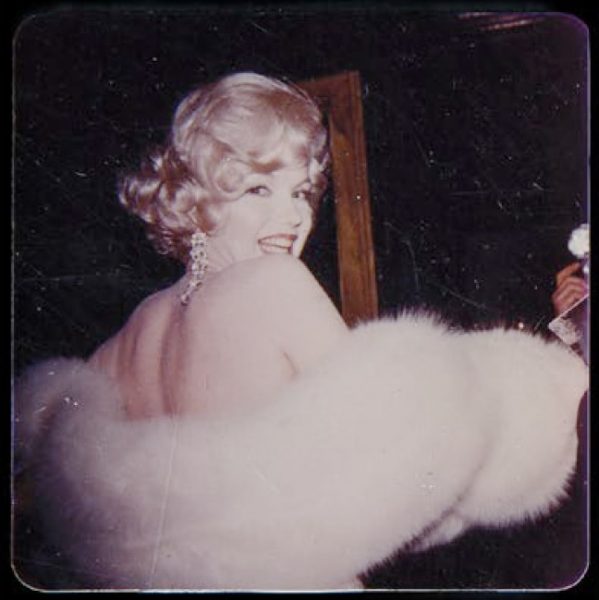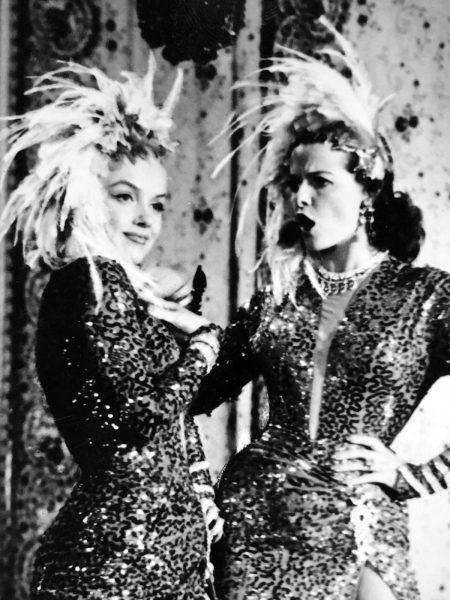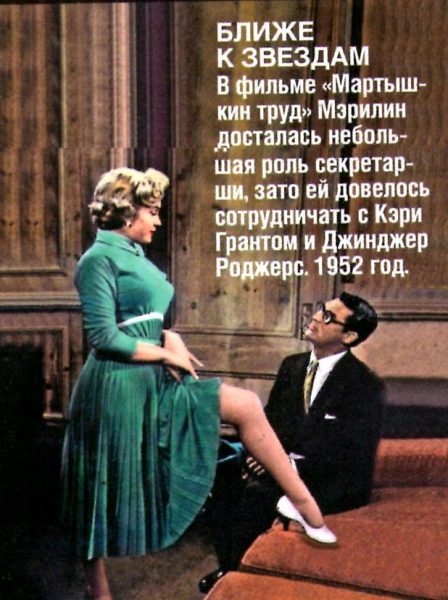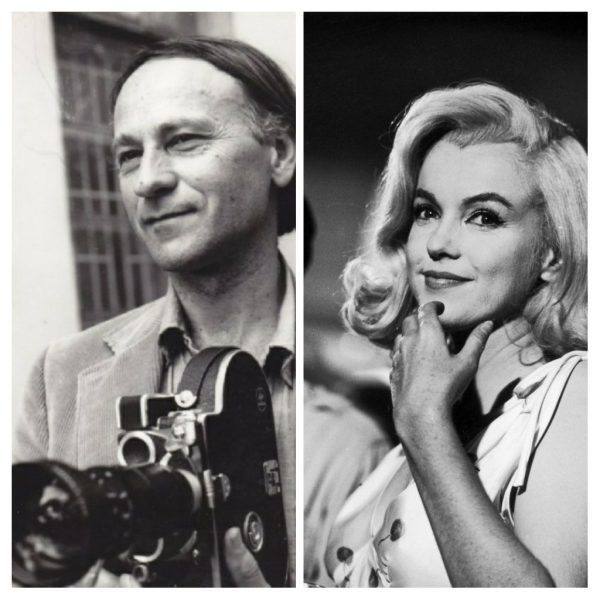
Dear Los Angeles: Letters and Diaries 1542-2017, edited by David Kipen, is a new anthology featuring two missives from Marilyn herself among its assorted diary entries and correspondence. The first – dated February 2nd, 1962 – is extracted from a letter to her stepson, Bobby Miller, recounting her meeting with the Attorney General, Robert F. Kennedy during a dinner party at Peter Lawford’s home. (You can read it in full by clicking on the images below.)
The second – which she wrote just over two weeks later, on February 17 – is a brief note to the German Consul, Mr. Volkmar von Fuehlsdorff.
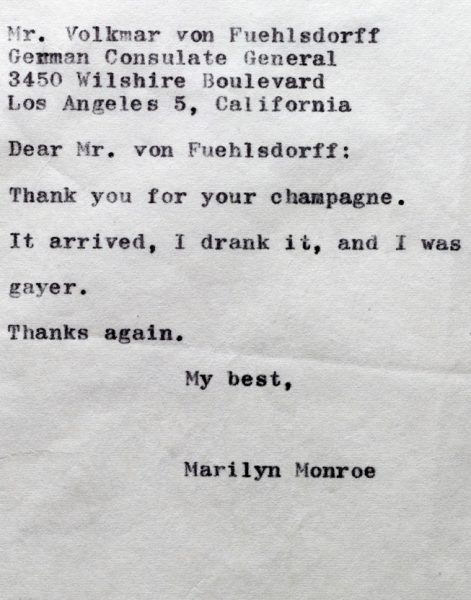
Marilyn was also mentioned by director Elia Kazan (her friend and former lover) in a tongue-in-cheek letter dated July 27, 1955. It’s unclear who Kazan was addressing, but his words are clearly in jest (Marilyn was in New York at the time.)
